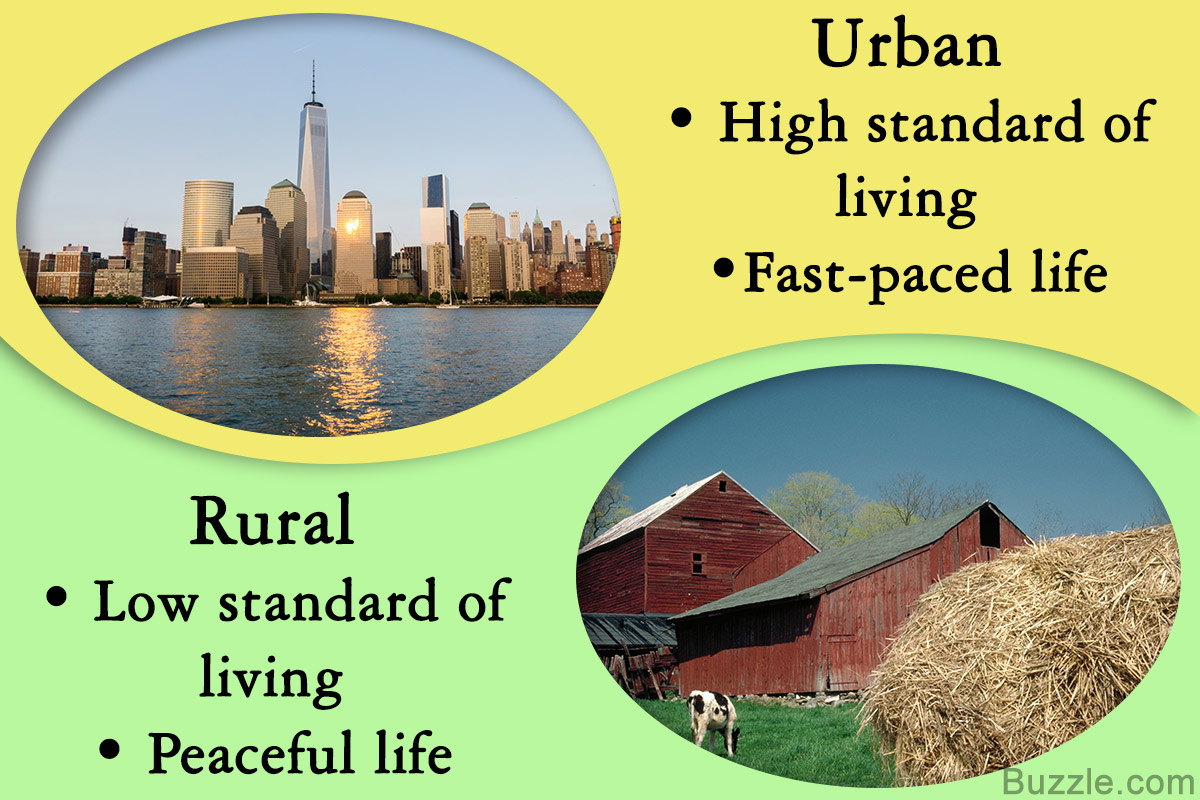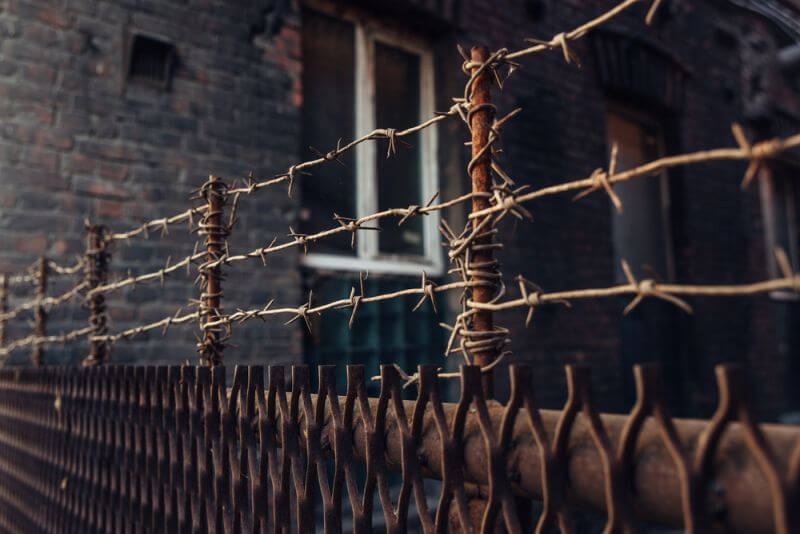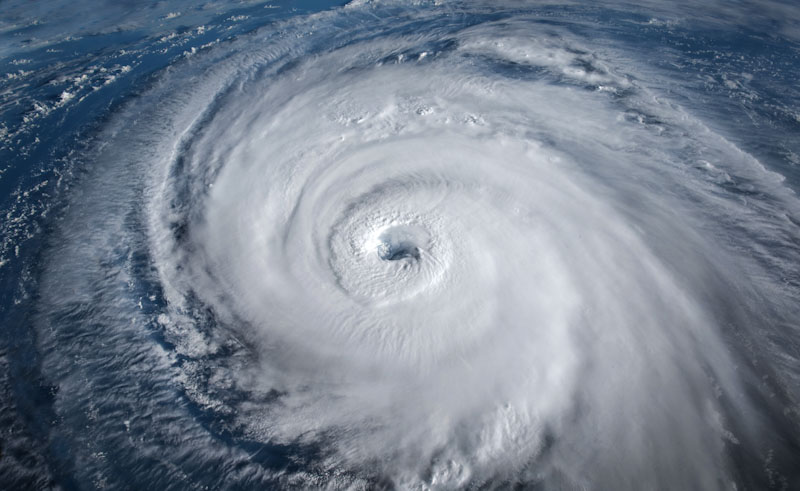One of the many debates which rages in the prepping and survival community is that of where to go, when a disaster strikes.
Part of that is the bug out vs. bug in question, but another part of it deals with where to hunker down, if you’re not heading for the woods. Tied in with that is the question of whether or not you are in a rural area or an urban one. Let’s look at some pros and cons to these important questions.
First of all, let me say that there is no one perfect answer for everyone. Survival isn’t a “one size fits all” sort of a game. There are just too many variables involved; such as your family’s specific needs, the type of disaster you’re facing, your personal living situation and your survival skills. For that matter, there may not be one perfect answer for you, which fits you in all scenarios.
How To Build a Small Bunker in Your Backyard with $400
With that out of the way, let me say that this question actually breaks down into three different zones, not two; at least in my mind:
- Rural
- Urban center city
- Suburban
There’s a huge difference in population density between suburbia and center city. In survival terms, that means a huge difference in the ratio of people to resources. The same can be said for the difference between living in an apartment complex (especially a hi-rise one) and a house. That ratio is critical for those who aren’t prepared and even affects us who are.
The Critical Factors
Ultimately, your decision as to where you are going to go in a disaster, including your home, has to be based upon your family’s chances of survival. You want to pick out the one place which will give you the best chance of survival. That could change over time, so it’s an issue that you will want to revisit, at least mentally, on a regular basis, especially during a time of crisis.
So, what are the major factors that affect how good a location is for your survival?
- How much of a stockpile you have
- Availability of water
- Availability of other resources, especially food
- Normal crime rate in the area (this will give you an idea of how quickly people will turn to violence to get what they need)
- Average age of the population (old people are less likely to turn to violence to get what they need)
- Population density (this affects how long available resources will last)
- Defensibility of your location
- Ability to grow your own food where you are
- Food warehouses and other hidden scavangeable locations there are in the area
- How many people know or suspect you are a prepper
- How badly weather is going to affect your location, specifically the integrity of your shelter
I realize that’s quite a long list, but understanding each of those items is critical to understanding how safe your area is, in the event of a disaster. Not only that, but you have to have a fairly good handle on how those things are in the area you are considering relocating to, in order to make an informed evaluation of the situation.
Rural Areas
Many people have the idea that rural areas will be better off in the face of pretty much any disaster, more specifically, they think that rural communities will have an abundance of food. That depends…
Rural farming communities are likely to have an abundance of food; but in today’s corporate farming climate, it might all be the same thing. So if you want a diet of nothing but sugarbeets or corn, they might have plenty of food for you to eat, if you pick the right farming community. But if you pick the wrong one, they might not have anything.
Overall, the ratio of people to resources is likely to be better in rural communities, simply because of the lower population. But the question is, what sorts of resources do they have? A ski town in the Colorado Rockies can be rightly considered a rural community; but unless you want to try living on a diet of snow, they might not have anything to help you survive. All their food is probably trucked in, so they may have less than you would find back in the city.
On the other hand, rural communities are less prone to violence, at least of the criminal sort. By and large, criminals stick to high population areas, as it is easier for them to hide in those communities. Rural communities are also more likely to have a conservative population, which has no compulsion against using their guns to protect home and family against attack.
But those same communities are less likely to be trusting of outsiders. If you show up at one, in the wake of a disaster, there’s a good chance of them sending you packing. That is, unless you have already managed to integrate yourself into the community before the disaster struck. If you know people and have prepared a survival cache in the city, you have a good chance of being accepted.
Urban Areas
Many people are more comfortable in urban areas, because they’ve always lived in those urban areas. There are people in this country who live in the same city they lived in all their lives, often within blocks of where they were born. They know the city like the back of their hand, which means that they will know what areas to avoid and where to find resources.
What resources we have as a country are largely stockpiled in cities, not rural areas. While farmers may grow the food, food processing plants tend to be in cities. So are the warehouses of the distribution companies that sell that food to the grocery stores. The problem for most people, is that they don’t know where to find those resources. They’ve never taken the time to map out the various warehouses in their own community, to find what they might have, which would be useful in a survival situation. The only source of food they know, is their local grocery store.
On the flip side of the coin, there are two major resource problems in big cities; water and the lack of available land. Unless you happen to live near a lake or river, you may have absolutely no access to water, if the city water shuts down. If you live in an apartment, you may not have any way of harvesting rainwater either.
The standard strategy discussed for long-term survival is to use gardening to augment and eventually replace your food stocks. Yet gardening of this type takes a lot of space. If you live in an apartment in the city, that might be difficult; not impossible, just difficult.
Suburbia, the In-Between
The third major area to be considered is suburbia. I believe that most of what I read that is written for the prepping and survival community is written for preppers who live in suburbia. There seems to be a general assumption that preppers live in private homes that they own, on good sized lots. Obviously, that’s not talking about center city areas.
But there’s a very valid reason why there’s so much focus on suburbia in the prepping and survival community. That is simply that a suburban home is a much better survival shelter than one in the city and far outshines living in an apartment.
While a suburban home is not an ideal homestead, it does provide the potential for homesteading. We’ve all heard of stories of someone growing all their own food in their backyard. While not common, there are enough people who have done so, to prove it is possible. I’ve even read of cases of people who did so in the backyard of a 1/5 acre lot. That’s not a whole lot of space.
Going back to my point about the ratio of population to resources, we find that this is usually pretty good in suburban areas, sometimes even approaching that of rural communities. At the same time, there are plenty of those warehouses that I was talking about a minute ago, at least some of which are bound to have food and other useful resources in them.
So, What’s the Best Solution?
As I said at the beginning of this article, the best decision is going to depend on a lot of personal factors. Only you can decide what is best for your family. Nevertheless, I think that we can make a broad evaluation, based upon the information presented above.
If the question is between a rural town and the inner city, I think the rural town wins, hands down. There are two reasons for this:
The first is the ratio of population to resources and the second is the improved level of security from two-legged predators. However, it will take time and resources to establish yourself in a rural community, so that you will be accepted if you have to bug out and go there. You can’t just expect to show up and be welcomed with open arms.
When we change the equation, adding in suburbia, the results change considerably. For those living in suburbia, there isn’t as much of an advantage of leaving their home and going to a rural area, unless they are moving there permanently. A suburban home offers too many opportunities for homesteading, turning your home into a true survival retreat. Leaving that, in order to go to an area where you would essentially be starting over, with nothing more than what you can carry and what you have cached, doesn’t make sense.
On the other hand, probably the best solution, for anyone who can manage it, is to sell your home in the city and move to that rural community now, buying a home with enough property that you can turn into a true homestead. Then, invest the time and effort necessary into that property to make it into the survival shelter your family really needs. This means:
- Gardening for food
- Growing animals for food
- Composting
- Drilling a well
- Developing your defenses
- Stockpiling supplies
The other advantage of this solution is that you can then invite your like-minded friends in the city to join you, as part of your survival team. That would provide them with someplace to go, as well as provide you with the help you’ll need to defend your home and do all the tasks necessary for survival.












Linda | September 2, 2018
|
If we had to do an emergency evacuation because of an approaching wildfire or a train derailment resulting in release of toxic chemicals or some other emergency that could cause local authorities issue an evacuation order, then we would hitch up the travel trailer, fill its refresh water tank, load up some shelf stable food and some clothing, put the pets in their crates into the truck, lock up the house and head out along whichever of three evacuation routes we believed to be safest. It would take 60-90 minutes to get underway if we had to do this quickly rather than the leisurely way we usually prepare for an RV trip. Our truck’s fuel tank is never allowed to get below half-full and we fill up the RV’s two propane tanks after every trip, so fuel would not be an issue if we had to leave suddenly.
Of course, the adults in my household watch the local TV news daily so we would be aware of changing local conditions and, if possible, would evacuate well before an evacuation order was issued. And we would be monitoring satellite radio and our CB emergency channel while underway. We would stay away from the evacuated area until local authorities said it was safe for residents to return. There are plenty of places along our evacuation routes for boondocking if we can not get a space in an RV park.
Shootit | September 4, 2018
|
One must remember Urban areas only exist because of the rural farmer. Without the farmer the city starves.
DarrenR | September 21, 2018
|
downer note about rural areas: consider the meth index. meth heads and people hooked on oxycodone, etc are as criminally inclined as a crack or heroin addict. there are some rural communities that have been devastated by that drug epidemic.
plus note about rural areas: north dakota has strong legal protections for family farms. so corporate farming is far less of a factor there.
Gman | August 22, 2019
|
Some people are just “DUMB”. you can bury a shipping container and it will be just fine. the side walls need to be re-enforced with a piece of 2 or 3 inch H-beam around the walls. You do the roof down the middle the same with 2 -2inch with Sch. 40 pipes equal distance welded to your H beam with a 12 in X 1/4 inch plate welder to the bottom of your plate. You can put a couple of lag bolts in each plate so it won’t kick out for any reason. Make your opening enterence how ever you want. Be sure to install intake and exhaust ports for “AIR”.You may want to install an escape hatch in the end using a piece of 2 ft. culvert with a “T” in the end .
When you back fill you should use some 1 inch minus gravel for a couple of feet so it will drain OK. You don’t fill one side then the other . You go around back filling a little at a time until it is filled to the top.
Good luck. Gman
BillH | August 22, 2019
|
I would break out “Rural” into 3 separate categories that are significantly different from each other., giving five total categories:
* Wilderness
* Rural countryside
* Town or small city
* Suburban
* Urban
Wilderness is the hardest place to survive, unless you have a lot of skills, the right gear, and go deep enough to avoid too much competition for natural food resources.. Yet much survival training and equipment is focused here.
Rural countryside (farm or homestead) is what we all think of, but survival requires becoming friends with your neighbors. , else gangs can take farms out one at a time.
Town or small city is rarely mentioned. Can be a lot like suburban in terms of density, and perhaps more likely to know your neighbors than in suburban. And (presumably) further from a large city than suburban. Although some “suburbs” are suburbs of an industry, government military or other institution, recreation area, small city, or other activity rather than a a major metropolitan area..
I found your article interesting and valuable.